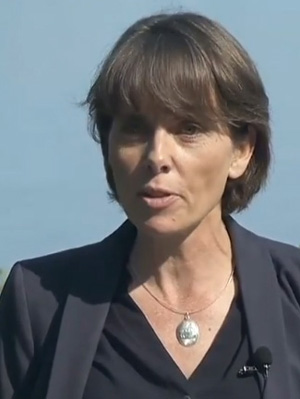Sunday October 4, 2020 | SOUTH VANCOUVER ISLAND
by Mary P Brooke, B.Sc., Editor | Island Social Trends
Income insecurity makes a direct impact on food security. Today Green Party Leader Sonia Furstenau addressed that equation in reply to two questions from Island Social Trends during her media teleconference from Duncan.
Furstenau says people need food, but not just any food. Food needs to be fresh, local and affordable.
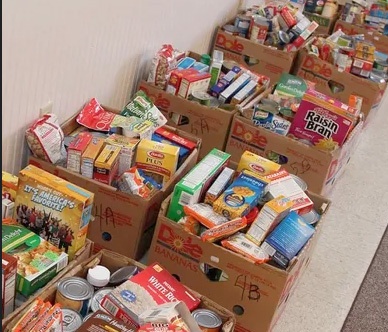
It is commonly the case that foods supplied through food banks are oftentimes non-perishable (cans, dried goods) due to the manner of collection, assembly and deliver; items are frequently not fresh and not always of the best quality.
Dealing with people’s needs in the moment, Furstenau points to shopping supports and cooking classes as ways to help fill gaps in the skills and access associated with acquiring and preparing fresh foods. Food hampers provided directly to school-age children’s families are another initiative that Furstenau points out is done in her local riding of Cowichan Valley.
These sorts of supports are labour intensive and require hands-on organization from people who are generally well-positioned enough (by time or resource) to execute the programs. But these are existing solutions.
“We need to lean into solutions that are already existing in our communities,” said Furstenau.
Using politics to support food security:
The BC Liberals approach to a functioning economy is to support businesses and then rely on those financial entities to generate jobs and further have that result in people having enough money to afford all the basics of life that they need.
The BC NDP approach in the past 3.5 years has been to provide more direct supports (income supplementation) to people with identified barriers (such as disabilities, senior age, single-parent household), as well as clearly recognizing the need for education and training or retraining in a wide range of economic sectors and committing funding into post-secondary training, apprenticeships programs, and eliminating interest on the BC portion of student loans.
When asked what the Green approach would be to addressing overall income insecurity which in turn contributes to food insecurity, Furstenau said: “We now have all the evidence that we need, that the trickle down economy does not work.”
The United States in particular (and to a similar degree, Canada as well), ended up with a huge divide between rich and poor as a result of decades of supporting big corporations at the top, presuming the wealth would ‘trickle down’ through jobs and corporate generosity. However, the profit-motive of corporations is about wealth for shareholders and many families who work hard to improve their station in life understandably resist sharing that gain.
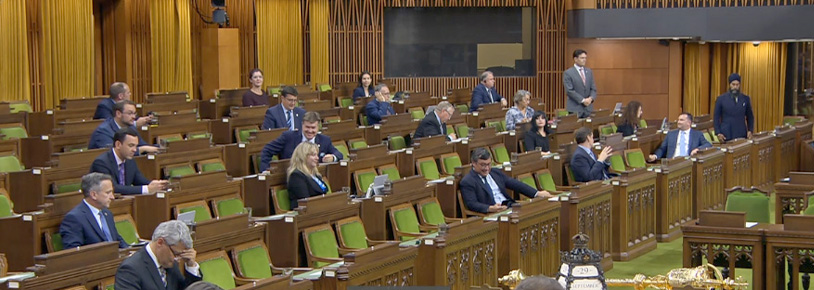
In Canada the NDP have forced the issue of wealth redistribution in various ways this year during COVID (including assuring a sufficient level and duration for CERB and other income supports to distribute resource at a desperate time). A great deal of credit can be fairly given to NDP Leader Jagmeet Singh and his party who facilitated income justice for Canadians through attentive politics in the House of Commons.
Just this weekend the federal Greens spoke about a cap on wealth (eliminating the idea of billionaires) so that wealth circulates through the community in a more natural fashion.

Recently, NDP Leader John Horgan’s vision in the COVID pandemic phase of economic recovery included a structural shift for young adult women in particular to look to well-paid stable careers in health care, with paid training from day one (for example as a health care assistant). The NDP offers that instead of young people at the start of their working years getting sucked into the low-wage tourism industry jobs that offer little to no security. That’s a case in point of leveraging the current system in ways that address root issues in the economy.
So, what would the Greens do differently? She’s not for reinventing the wheel, but instead would look at “how do we integrate food security and affordability into communities in ways that have been shown to be successful?”. Working with what we have, but imaginatively and then taking action on those plans.
Providing food through schools:
Furstenau mentioned how food hampers are delivered through schools, something that has come as a surprise to many during COVID amidst all the other inequities that the pandemic has revealed.
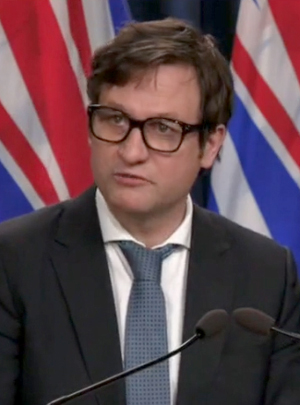
Between the lines, it was one of the reasons the BC Ministry of Education kept schools functioning right through the pandemic, so that social safety-net programs such as providing food to families in need could continue unhampered.
But is that really a role for the schools? Would a Green government provide more attention to food security supports through its own delivery system apart from the education system?
“That’s an indication of how desperate things have gotten, for way too many people and way too many families in BC,” said Furstenau about the significant production of meals and food hampers through the school system.
Child poverty rate high in BC:
“Here in Cowichan we have one of the highest child poverty rates in the province,” the BC Green leader said. “That is something that none of us should be okay with.”
Statistics Canada 2016 statistics show BC’s child poverty rate for children age newborn to 17 in 2015 was 18.3%, representing 153,300 children. This is nearly a full percentage point higher than the national average of 17.4%. It is down slightly from the 2014 rate of 19.8%.
In BC the poverty reduction strategy introduced during the Horgan government of 2017-2020 includes “understanding how offering basic income to eligible people could reduce poverty in B.C. and help break the cycle for people who are struggling to get by”. Perhaps the federal CERB program during COVID, topped up for low-income and disabled people in BC, was a good example of how meeting one’s basic needs without distress is beneficial to socioeconomics of the province overall. Basic income can be delivered through direct payments to people or through the personal income tax system.
Affordability is the key:
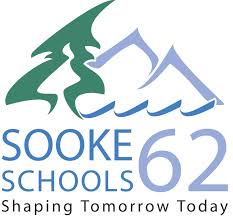
“Schools around BC have become prominent providers of food and meals for children and families. At this time, we have to recognize that no child can go to school and expect to be a successful learner if they have not had enough food to eat,” Furstenau said.
[e.g. See list of local food sources within the Sooke School District 62 website; SD62 also staffs and operates a Healthy Schools program.]
“We want to look at solutions,” she said, saying that “the outcomes that we want to have” includes people being able to afford housing (the main topic of her campaign announcement in Duncan today) and “for people to have access to and be able to afford healthy food”.
She says that “to increase food security requires supporting local farmers and recognizing that this is an urgent issue”. Looking at all solutions — including things that exist and are available now– is the way to approach that problem and “making sure we are leaning into and supporting those solutions”.
Farmer’s markets:
Food prices at local farmer’s markets are not always affordable compared to at grocery stores, as local farmers have overhead costs to immediately recoup, but the freshness factor appeals to those who can afford it. The BC Government has a Nutrition Coupon program to help those who qualify (lower-income families, pregnant women and seniors).
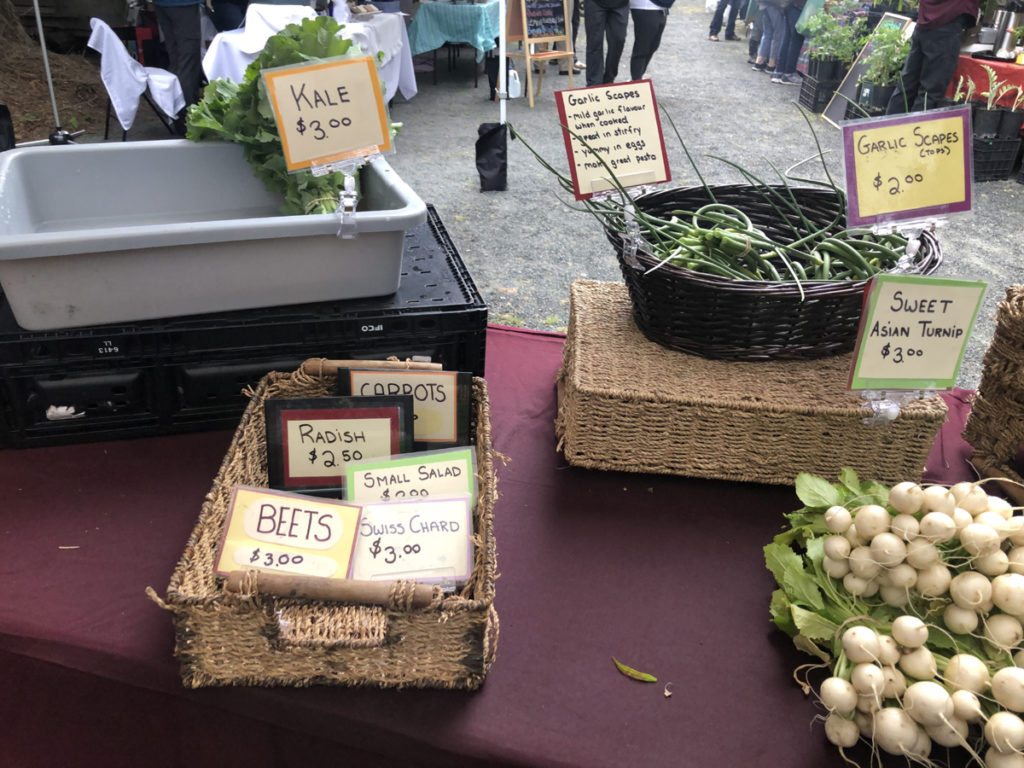
Many farmer’s markets that were open during the summer in the west shore area (such as in Goldstream Farmer’s Market in Langford to November 28, Sooke Country Market which runs through October and the Sooke Night Market which ended September 3, and the Shirley Farmer’s Market west of Sooke) are done or winding down now, being past the fresh harvest of the summer growing season and generally avoiding cooler weather outdoors.
The Duncan Farmer’s Market was open on Saturday October 3 with a limited capacity of 80+ vendors. The market is a community gathering place, often visited by local and visiting politicians as a way to connect with the community.
The Esquimalt Farmer’s Market will carry on this fall from October 1 to November 19, on Thursdays (4 to 6:30 pm), outside in the lacrosse box beside Esquimalt Rec Centre, 527 Fraser Street. Food can also be ordered online and picked up, to facilitate physical distancing. Esquimalt Mayor Barb Desjardins was excited to mention that in one of her online townhalls recently.
The Moss Street Farmer’s Market in Fairfield continues year round, continuing through October on Saturdays. During November through April on Saturdays it’s held indoors at two nearby locations (one of them a school).

Growing veggies in your yard:
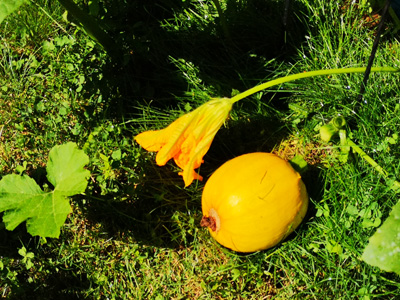
At the beginning of the pandemic this spring, growing vegetables and fruits in one’s own yard was as much of a hobby as a new awakening about the freshness and nutritional value of homegrown food.
Through spring and summer, garden centres saw a boom in sales for everything from soil and seeds to tools and structures.
After a summer of garden work and the effort of harvesting, it will be interesting to see whether the resurgence of growing one’s own food continues in spring 2021.
Food banks:
Some people who never had to access a food bank before found themselves in need of that service during the early phases of the COVID pandemic in particular, and notably in larger cities.
Food banks accept only non-perishable food items from individual and group donors, often topping up hampers with fresh produce that has been donated from grocery store oversupply and unused restaurant inventory. However, with pandemic-related interruptions to the food supply chain (affecting the availability of certain foods at any given time) and restaurants also struggling for their own economic survival, these back-end sources of food supply are available less reliably to food banks.
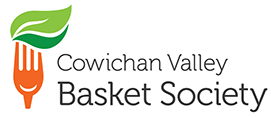
Fresh components of food hampers at Christmas time (such as bags of potatoes or carrots, and a frozen turkey or ham) are usually paid for as bulk orders by food banks, who are relying on donations to make that service possible.
The Duncan Food Bank and Cowichan Valley Basket Society are presently seeking donations of meat (fresh or frozen) for hampers.
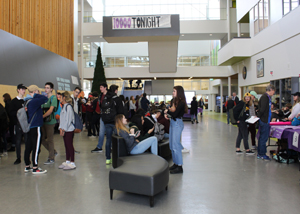
Food bank drives — such 10,000 Tonight (a big one organized by three high schools in the west shore in early December each year), are less likely to produce the same volumes (if any) due to COVID restrictions around physical distancing and touch-hygiene.
Some organizations who normally would do food drives have been donating cash instead this year, such as when the Island Corridor Foundation donated $14,000 this year during COVID, to be shared among seven food banks in the central and south island region.
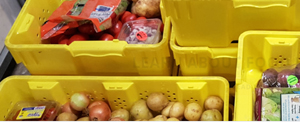
Municipalities also support their local food banks with cash donations, including Langford with an annual Christmas-season donation and Sooke where the support became a budget line item in recent years.
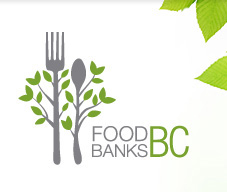
Food Banks BC this year had the opportunity to receive funds from the provincial government’s community gaming grants process during the Provincial State of Emergency declared in response to the COVID-19 pandemic. The funds included directives from government to remove barriers to food bank recipients and to allow drive-through and delivery opportunities, larger hampers, increased home delivery capability, and to remove the requirement of means’ testing.



